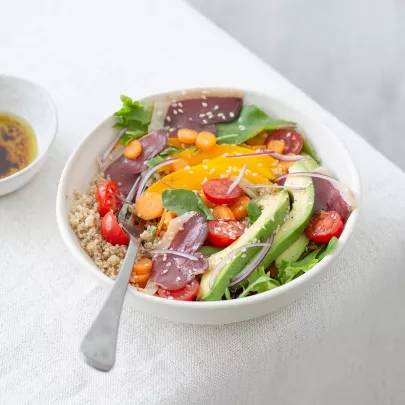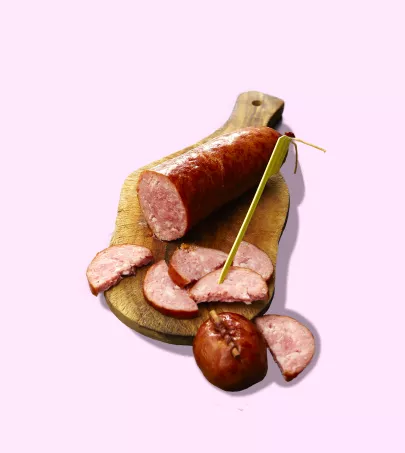
Free-Range Landes Duck Breast PGI
Nouvelle Aquitaine
Ironically, Landes free-range duck breast fillet is a lean cut taken from a duck raised for its "foie gras," or fatty liver. While the fillet is tender and tasty when roasted, it can also be dried, smoked, or served as duck confit.
What you need to know
In southwestern France, duck breast fillet is served during celebrations year round. It is delicious pan-seared, grilled on the barbecue, dried or smoked and paired with a salad, or served as duck confit for a comforting winter meal.
It's a great example of the French paradox—a lean meat that originates from an overweight duck. It also pairs well with a red Bordeaux wine. Duck breast fillet is called magret in French, which in turn means petit maigre, or "little lean meat" in Occitan, the language spoken in southern France. This type of meat is actually a fillet taken from the pectoral muscles of a fatty duck. In Landes, Red-Label free-range ducks are raised outdoors for more than 102 days of the year. They are fed whole corn kernels grown in the region and raised in a traditional manner in accordance with a strict set of specifications. The same level of strictness applies to how the meat is processed after slaughter. The duck breast fillet must be cut within 24 hours, packaged in a certain manner, and clearly labeled. Red-Label certification guarantees a high-quality processing method was used and can also be applied to cooked products, such as duck confit.
Nutritional benefits
Rich in vitamin B12, B3, B6, and B2 as well as selenium.
At 205 calories per 100 g, duck breast fillet has just a few calories more than the average poultry meat (197 calories).
Editor's note
How to use
Preparing and serving Landes Free-Range Duck Breast Fillet
Remove the raw duck meat from the refrigerator 30 minutes before cooking it in the skillet.
Cut a grid pattern through the skin and fat without scoring the meat. Salt the "skin" side of the cut liberally.
On low heat, place the fillet in the skillet skin side down without adding oil. The fat will melt and brown the skin. Let cook for 7 to 10 minutes, then pour the excess fat into a bowl.
Flip the fillet over and let cook. Cook for three minutes for rare duck breast and five minutes for a pink-tinged fillet (approximate times). It is better to under-cook the meat rather than over-cook it. The finishing touch that makes all the difference: wrap the fillet in aluminum foil and let rest for ten minutes. The blood will settle throughout the meat and make it extra tender!
Storing Landes Free-Range Duck Breast Fillet
When purchased fresh and sous-vide, duck breast fillet can be kept in the refrigerator for a few days. When dried or smoked and sous-vide, it can be kept in the fridge for several weeks. When canned in the form of duck confit, this type of meat can be stored for several years in a cool, dry place.
Tasting Landes Free-Range Duck Breast Fillet
Cook until pink to rare. Be careful...when cooked "well done," duck breast fillet becomes dry and loses its flavor and tender texture.
Pair with
Savory: Potatoes, mushrooms, kuri squash, sweet potatoes, and chestnuts (LH).
Sweet: peaches, apples, figs, mangoes, clementines, oranges, and red berries.
Red wine: Saint-Emilion, Saint-Estèphe, Côte-de-Blaye, Pomerol, Côte-de-Gascogne, Tursan, Cahors, and Minervois.













